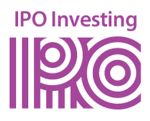 The Renaissance IPO ETF (IPO) had its initial public offering yesterday (10/16/2013), and not everything went as planned. The timing was right, it launched on a day when the S&P 500 and Dow both jumped 1.4%. The ETF’s sponsor, Renaissance Capital, priced the new shares at $20, and they finished the day at $20.34 for a 1.7% gain.
The Renaissance IPO ETF (IPO) had its initial public offering yesterday (10/16/2013), and not everything went as planned. The timing was right, it launched on a day when the S&P 500 and Dow both jumped 1.4%. The ETF’s sponsor, Renaissance Capital, priced the new shares at $20, and they finished the day at $20.34 for a 1.7% gain.
The day began and ended well, but what happened in between is a head scratcher. Many buyers paid a $1 premium to purchase shares, getting badly burned in the process. All ETFs publish their Indicative Value (“IV”) every 15 seconds, providing investors and market makers with important information regarding the fund’s true value. IPO’s IV started the day at $19.81 and rose steadily to close at $20.25, its highest value of the day.
 Meanwhile, share prices took a different path. As seen in the picture below, the first two hours of trading were rather uneventful. Then, about 10:30 (central), large volume came in and the price (green and red bars) began to diverge from the IV (blue line). This was not a short single-trade glitch that often occurs when someone uses a market order when they should have used a limit order. An hour later, trades were going through at $21.40 per share when they were only worth $20.15. People were paying a 6% premium. This continued until about 12:00 (central), when the price began to fall back to its IV. By 12:15, order had been restored, but in the meantime, more than 350,000 shares were bought at hefty premiums. No explanation has been provided.
Meanwhile, share prices took a different path. As seen in the picture below, the first two hours of trading were rather uneventful. Then, about 10:30 (central), large volume came in and the price (green and red bars) began to diverge from the IV (blue line). This was not a short single-trade glitch that often occurs when someone uses a market order when they should have used a limit order. An hour later, trades were going through at $21.40 per share when they were only worth $20.15. People were paying a 6% premium. This continued until about 12:00 (central), when the price began to fall back to its IV. By 12:15, order had been restored, but in the meantime, more than 350,000 shares were bought at hefty premiums. No explanation has been provided.
According to the overview page, the Renaissance IPO ETF (IPO) is designed to provide investors with exposure to newly public companies prior to their inclusion in core U.S. equity portfolios. Initial Public Offerings (“IPOs”) that meet liquidity and operational screens are included in the underlying rules-based Renaissance IPO Index at the end of the fifth day of trading, or upon quarterly reviews, weighted by float capitalization, capped at 10%, and removed after two years.
Sectors with more than 10% current weightings include Technology 24.2%, Financials 17.9%, Consumer Services 16.3%, Consumer Goods 15.0%, and Health Care 11.7%. Its capitalization distribution is Large Cap 65%, Mid Cap 33%, and Small Cap 2%.
The ETF currently has 50 holdings, including Facebook (FB) 10.8%, Zoetis (ZTS) 9.9%, Delphi Automotive (DLPH) 9.7%, Michael Kors Holdings (KORS) 9.4%, and Realogy Holdings (RLGY) 5.3%. The new IPO ETF has an expense ratio of 0.60%.
Analysis/Opinion: The first thing investors need to understand is this ETF will not own stocks prior to their IPOs and therefore will not participate in first day pops and flops. The soonest it will add a stock is on the fifth day of trading. Authorized Participants create and redeem ETF shares from actively traded, listed stocks. Therefore, there is no reason for investors to ever pay a premium.
Secondly, there is little new or original here – it is not the first IPO ETP. The First Trust IPO Index Fund (FPX) (overview page) has been around for more than seven years. FPX is up 37.8% year-to-date and did not trade at a premium yesterday (or any day that I am aware of). Since its inception in April 2006, FPX has returned +11.3% annually versus +6.2% for the S&P 500 and only +1.5% for the Renaissance Global IPO Mutual Fund (IPOSX). FPX has a 0.60% expense ratio, reconstitutes and adjusts its 100 holdings quarterly, and removes stocks after about four years.